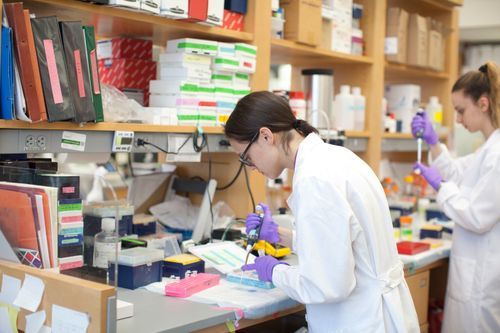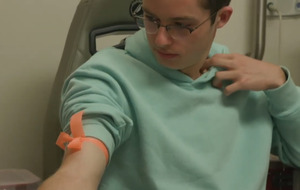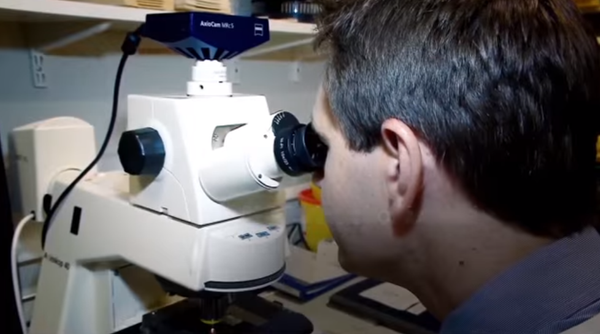Primary sclerosing cholangitis (PSC) is a rare liver disease that is often misdiagnosed. It can take a long time to receive the correct diagnosis. In fact, your disease may have been identified through a long and frustrating route. (Sometimes, there may also be some confusion between PBC and PSC. See the explanation at the end of this page.)

SERUM LIVER TESTS
If a liver problem is suspected, one of the first things your doctors will do is test your blood and examine the results of your serum liver tests, often referred to as liver function tests, or LFTs. This term broadly refers to a panel of blood tests which provide not only an indication of liver function, but also liver inflammation, blockage of bile flow, and other parameters. If the values are outside or above the normal range, this may indicate a liver problem, among other possible explanations, as discussed below:
- GGT (Gamma-glutamyl transpeptidase) — This is an enzyme (a protein that helps carry out biochemical reactions or processes) which is found mainly in liver and bile duct cells (hepatocytes and cholangiocytes, respectively). GGT can increase when there is damage to the liver or bile ducts. In the majority of individuals with PSC, GGT will be elevated above the normal range, because PSC involves inflammation and damage to the bile ducts. However, it is not checked as often in adult patients as it is in pediatric patients.
- ALT (also abbreviated SGPT) (Alanine aminotransferase) — This is an enzyme mainly found within liver cells. Elevations in ALT usually indicate liver and/or bile duct inflammation. Aspartate aminotransferase (AST, also referred to as SGOT) is a similar enzyme but is less specific to the liver, since it is highly expressed in other tissues such as muscle.
- ALP (Alkaline phosphatase) — This is an enzyme expressed on the surface of liver and bile duct cells (as well as bone, placental, and other cells). ALP is typically elevated when there is a problem with bile flow, including bile duct blockages, such as may be seen as a result of strictures, stones, or masses.
- Bilirubin — Bilirubin is a yellow pigment and a normal byproduct of red blood cell metabolism. Red blood cells normally last in the circulation for about three months, after which they are broken down and recycled. One of the components of red blood cells, hemoglobin, is broken down into bilirubin through a series of biochemical reactions. Bilirubin is transported to the liver, where it is processed further (i.e. conjugated) and then secreted into bile. If bilirubin cannot be effectively transported through the bile ducts, bilirubin levels in the blood may rise, jaundice (skin yellowing) could appear, stools may become grayish white, and urine may turn a dark orange color.
- Albumin — Albumin is made by the liver, and constitutes the main circulating protein in human blood. Low blood albumin levels may represent problems with liver function, although they can also be due to kidney failure, chronic infection, and various other causes.
- PT and INR (Prothrombin time and international normalized ratio) — PT measures how long it takes plasma to clot, with most clotting factors being made by the liver. While the usual reference range for PT is 12-15 seconds, because there can be variation in laboratory methods and materials, the INR is used as a means to standardize the PT (and is thus more universally applicable). As with albumin, PT and INR can be affected by various things aside from liver function, including, but not limited to, medications and heart function.
- Tests and Trends — In a similar way to blood pressure, the above-named liver test results will usually vary over time, and trends over time (i.e. over the course of days to months) are typically more important than individual values. There are many other blood tests that your doctors may order, but the tests listed above are the main tests that should be monitored on a regular basis.

PSC MEDICAL TESTS
While we have lots in common, every PSCer is unique. Therefore, once you’ve been diagnosed, a sound and thorough diagnostic workup enables experienced specialists to tailor PSC management just for you.
The steps and tests commonly used to diagnose and assess PSC are:
- Medical History — The medical team will ask about symptoms, family history, and diseases that can be associated with PSC, among other questions.
- Blood Tests — Blood tests are used to examine liver function and inflammation, as well as the status of other organ systems. These tests include ALT (alanine aminotransferase), AST (aspartate aminotransferase), ALP (alkaline phosphatase, also abbreviated as ALK), GGT (gamma-glutamyltranspeptidase), and bilirubin.
- Magnetic Resonance Cholangiopancreatography (MRCP), is a first-line, non-invasive test used to view the bile ducts, liver, pancreas, and gallbladder, and is often used to diagnose PSC.
- Endoscopic Retrograde Cholangiopancreatography (ERCP) is a medical procedure that can diagnose and treat diseases of the biliary tract, liver, pancreas, and gallbladder. ERCP involves passing an endoscope through your mouth and stomach and into the small intestine.
- Colonoscopy — Because PSC is often associated with inflammatory bowel disease (IBD), especially ulcerative colitis (UC), a colonoscopy may be recommended to see if you have this condition.
- Liver Biopsy — If the above have been performed but the diagnosis cannot be established or more information is needed, a liver biopsy may be pursued.
YOUR DOCTOR CAN ANSWER MORE DETAILED QUESTIONS ABOUT ALL LABORATORY AND DIAGNOSTIC TESTING.
PSC STAGES
PSC is often staged, which refers to the degree to which the disease has progressed from very early to very advanced with respect to scar tissue formation, known as fibrosis. This is typically based on a liver biopsy and categorized as follows:
- Stage 1 – A small amount of fibrosis limited primarily to regions in the liver called portal areas.
- Stage 2 – Fibrosis begins to appear outside the portal areas. The strands of fibrosis are not yet connected to each other.
- Stage 3 – Areas of fibrosis connecting to each other.
- Stage 4 – Widespread, honeycomb like scarring known as cirrhosis.
PBC VS. PSC: NAME CHANGE MAY CAUSE CONFUSION
The full name of the liver disease known as PBC has officially changed from primary biliary cirrhosis to primary biliary cholangitis. While the acronym is still PBC, due to the similar initials for these two diseases, we should all be careful to differentiate between primary sclerosing cholangitis (PSC) and primary biliary cholangitis (PBC).
Visit this page for more information.
Complete your profile and join PSC Partners Seeking a Cure in advancing PSC research towards a cure. Find information about clinical trials.





